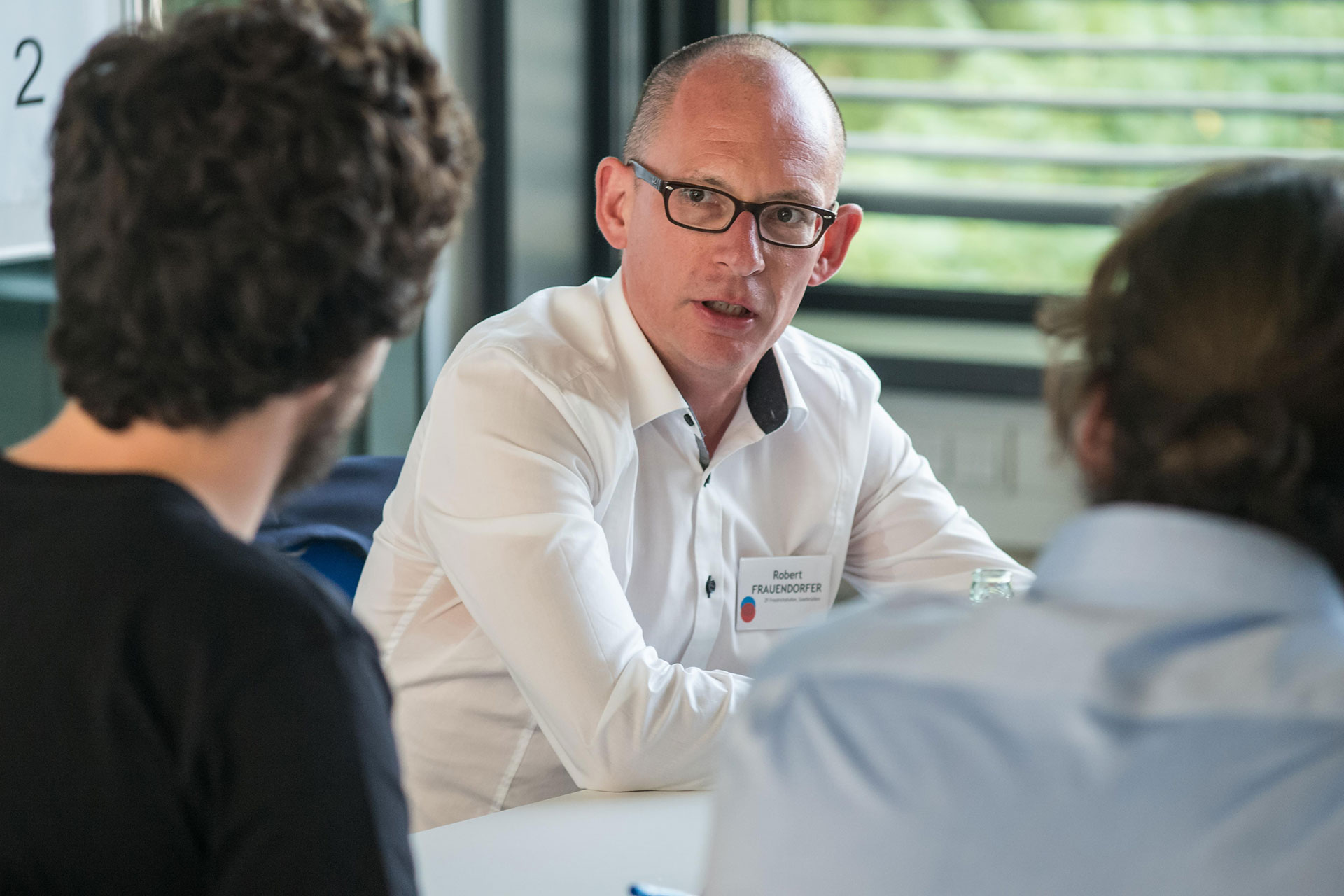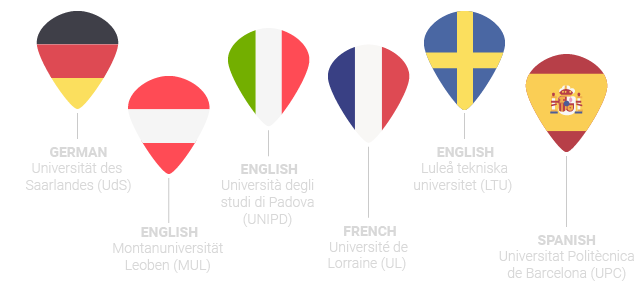Advanced Materials Science and Engineering – AMASE
The master at a glance
AMASE in detail
| Study Programme | AMASE – Advanced Materials Science and Engineering |
| Degree | Double Degree, Master of Science (M.Sc.) |
| Duration | 2 years/4 semesters (including 6 months work on the Master’s thesis) |
| Universities | UdS – Universität des Saarlandes/Germany LTU – Luleå tekniska universitet/Sweden UL – Université de Lorraine/France UPC – Universitat Politècnica de Catalunya Barcelonatech/Spain MUL – Montanuniversität Leoben/Austria UNIPD – Università degli Studi di Padova/Italy |
| Languages of instruction | English (at LTU, MUL and UNIPD), German (at UdS), French (at UL), Spanish (at UPC) – You will study in two languages. |
| Participation costs per semester | 1.500 €/EU students; 4.500 €/non-EU students |
| Mobility | You study at two universities of the Consortium. 1st + 2nd Semester: chosen Entrance University 3rd Semester: chosen Second University. 4th semester: Master’s thesis at Entrance or Second University. |
| Admission requirements | Bachelor of Science or similar degree with training in: Mathematics, Physics, Chemistry, Physical Chemistry, basic knowledge of the structure and behaviour of materials |
| Scholarships | Erasmus Mundus/Erasmus+/DFH (German-French) |
The AMASE programme is suitable for both European and Non-European B.Sc. graduates in Material Sciences and Engineering, Physics, Chemistry and other related Engineering disciplines.
AIMS

The AMASE programme offers:
- A well organised multilingual and intercultural study experience.
- A study programme in close collaboration with the research activities of the six Consortium members.
- Teaching in advanced materials, giving students innovative new ideas for their future careers.
- Preparation of students for life-long learning in different cultures and education/work environments.
- Better networking possibilities for research and education within the EU and with third countries.
TEACHING AND RESEARCH
The combined teaching and research programmes of the six Consortium members offer:
- A far greater variety of competences in the field of materials science and engineering than could be provided by a single university.
- Valuable opportunities for specialisation.
- A broad spectrum of research possibilities, from fundamental to industry-related research.
- The integration of different university profiles into one single study programme.






